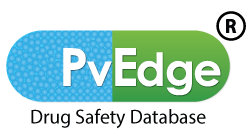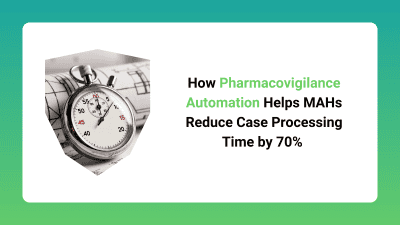Introduction: The Growing Need for Pharmacovigilance Automation
For Marketing Authorisation Holders (MAHs), managing regulatory pharmacovigilance (PV) cases is one of the most resource-intensive aspects of operations. With the increasing volume of safety data, adverse event reports, and global regulatory expectations, manual processing often leads to delays, bottlenecks, and compliance risks. This is where pharmacovigilance automation comes into play — a technology-driven approach that can dramatically reduce case processing timelines while maintaining high regulatory standards. In fact, organisations leveraging PV automation report reductions in case processing time by up to 70%, freeing teams to focus on higher-value safety activities.
How Pharmacovigilance Automation Reduces Case Processing Time
Regulatory-origin cases form the bulk of MAH workloads, requiring meticulous review, assessment, and reporting. Traditional workflows, reliant on manual data entry and validation, are often slow and prone to errors. Pharmacovigilance automation introduces several efficiencies:
Automated Case Intake: AI-driven systems can extract data from emails, portals, and digital forms, instantly creating structured case records.
Standardised Case Triage: Automated rules prioritise cases based on severity, seriousness, or regulatory deadlines, ensuring urgent cases are addressed first.
Template-Based Assessment: Predefined templates for adverse event assessment reduce repetitive work and accelerate consistent evaluations.
Automatic Reporting: Once cases are validated, PV automation platforms can generate expedited regulatory reports in line with regional requirements.
By automating these steps, MAHs can reduce manual intervention, prevent backlogs, and achieve faster case closure — often realising a 70% reduction in processing time.
Key Benefits of Pharmacovigilance Automation for MAHs
Faster Regulatory Compliance:
Regulatory authorities such as the FDA, EMA, and MHRA have stringent timelines for case reporting. Pharmacovigilance automation ensures that reports are processed and submitted promptly, reducing the risk of non-compliance.
Improved Data Accuracy and Consistency:
Manual entry is prone to human error, which can lead to inconsistencies and inspection risks. Automation minimises these errors, maintaining uniformity across all regulatory cases.
Resource Optimisation:
By automating routine tasks, PV teams can focus on signal evaluation, risk assessment, and strategic safety initiatives — activities that require human expertise.
Scalability Across Regions:
Global MAHs face different reporting requirements in each market. Automation systems can handle multiple regulatory formats simultaneously, simplifying global case management.
Challenges MAHs May Face When Implementing Pharmacovigilance Automation
While the benefits are substantial, MAHs must address several challenges to implement PV automation effectively:
System Validation and Compliance: Automated tools must be validated to ensure they meet regulatory requirements and perform consistently.
Integration with Existing PV Systems: Ensuring smooth interoperability with case management, literature monitoring, and reporting systems is critical.
Change Management: Staff need training to adapt workflows and trust automated processes for critical case evaluations.
By proactively addressing these challenges, MAHs can unlock the full potential of pharmacovigilance automation while staying compliant.
Best Practices for Maximising Efficiency with Pharmacovigilance Automation
Define Clear SOPs: Establish standard operating procedures for automated workflows, including quality checks and escalation protocols.
Leverage Analytics: Use automation dashboards to track processing times, detect bottlenecks, and optimise resource allocation.
Maintain Human Oversight: Even with automation, experienced PV professionals should review critical cases and ensure accurate decision-making.
Regularly Update Systems: AI models and automation rules must be updated to reflect new regulations and safety signals.
Conclusion: Transforming Case Management with Pharmacovigilance Automation
For MAHs, the pressure to manage regulatory PV cases efficiently and accurately is increasing every year. By adopting pharmacovigilance automation, organisations can reduce case processing time by up to 70%, improve data quality, and enhance global regulatory compliance. Automation does not replace human expertise — it empowers PV teams to focus on strategic safety activities while ensuring routine case management is faster, more reliable, and audit-ready.
Investing in PV automation today is not just about efficiency — it is about transforming pharmacovigilance operations to meet the demands of a global and highly regulated industry.



